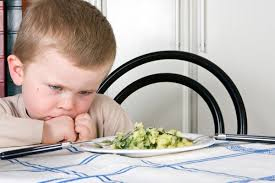
Picky eating is when a child refuses foods often or eats the same foods over and over.
Most toddlers or preschoolers will go through a phase of picky eating, this is usually associated with children becoming more independent with self-feeding, and taking control in deciding for themselves what and how much they will eat. This is an important part of the process of learning to eat and for them to learn to recognise feelings of hunger and fullness.
The preschool years are also a period of rapid and constant changes in growth and development – our kids are learning to run, jump, climb, chat, and play in more and more complex ways; and so sometimes children seek the same familiar foods over and over as it helps them to feel safe and secure amidst the great changes.
Parents often worry that their picky eater is not getting enough nutrition to grow adequately, but in most cases they are. If however you have concerns regarding your child’s growth, weight gain or nutritional intake discuss this with a health professional.
So when is picky eating considered a problem and not just part of normal development?
The following resource from sosapproachtofeeding.com highlights some of the red flags for parents to watch out for:
https://sosapproachtofeeding.com/wp-content/uploads/2019/07/Am-I-at-your-Table-1.pdf
Do you recognise any of these issues in your child?

It’s no wonder so many kids struggle – eating is complicated! Eating is the only task that humans engage in that involves all systems of the body working together at the same time – brain, sensory system, vestibular, cardiovascular, digestive system and more! Eating is a skill that must be learnt, just like walking and talking.
Did you know that there are actually 32 sensory and oral motor steps involved in learning to eat?! It’s not just a case of step 1 pick up the food, step 2 eat it! If only it were that easy…!
So if you have concerns regarding your child’s feeding don’t hesitate to seek out support. At Cornerstone, our therapists are skilled in working with children with feeding difficulties, and are trained in the SOS approach.
The SOS approach is designed to assess and address all the factors involved in feeding difficulties. It is a family centered approach which focuses on building the child’s individual skills using food in a fun, play based and non-threatening way.
In the meantime, here are tips to help your picky eater:
Eat with your child so they can see how you eat, what you eat and how much you enjoy food. Kids love to copy their parents!
- Have realistic expectations of what and how much your child will eat. Offer them the right kind of food for their age/skills.
Let them get messy with food, wearing your food is a very important part of the process of learning to eat!
- Talk about foods. Their taste, smell, colour, how they feel when you touch them or put them in your mouth, how they sound when you bite and chew them.
Find the right kind of seat so they can sit safely and comfortably, as part of the family. Not worrying about holding themselves upright or trying to reach the table!
- Make eating a pleasant and positive experience. Try to avoid rushing, power struggles, nagging or bribing!
- Offer a range of foods, a mix of familiar and new, and do not get discouraged if they don’t like it at first. Research has shown that a food can be presented to a child up to 15 times before they will accept it. So don’t give up if a child refuses something once!
- Let your child decide what and how much they eat. Trust them to eat when they are hungry and decide when they are full. The amount they eat at each meal and day to day will vary.
Caitriona Hooper
Occupational Therapist


 Eat with your child so they can see how you eat, what you eat and how much you enjoy food. Kids love to copy their parents!
Eat with your child so they can see how you eat, what you eat and how much you enjoy food. Kids love to copy their parents! Let them get messy with food, wearing your food is a very important part of the process of learning to eat!
Let them get messy with food, wearing your food is a very important part of the process of learning to eat! Find the right kind of seat so they can sit safely and comfortably, as part of the family. Not worrying about holding themselves upright or trying to reach the table!
Find the right kind of seat so they can sit safely and comfortably, as part of the family. Not worrying about holding themselves upright or trying to reach the table!

